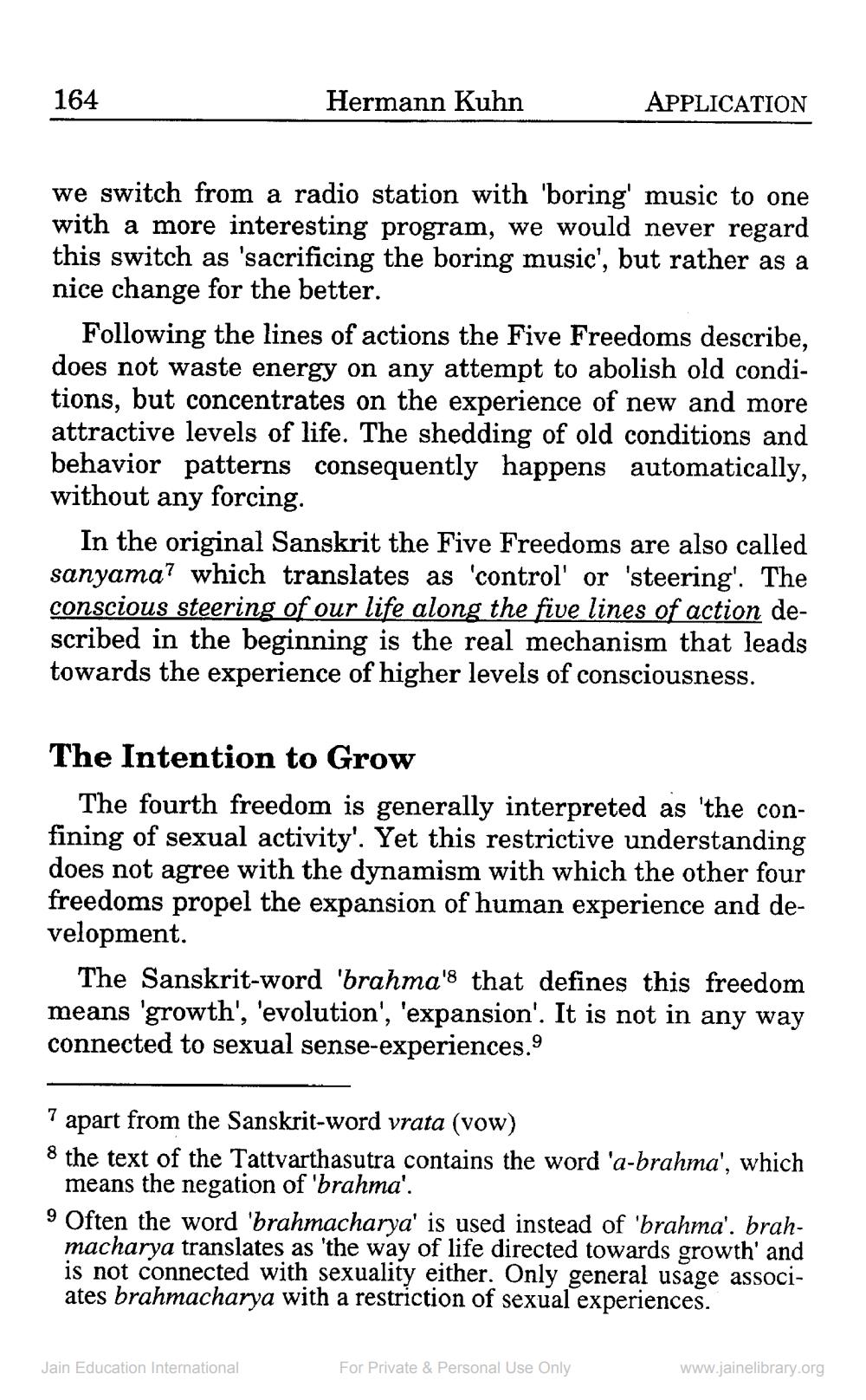________________
164
Hermann Kuhn
APPLICATION
we switch from a radio station with 'boring' music to one with a more interesting program, we would never regard this switch as 'sacrificing the boring music', but rather as a nice change for the better.
Following the lines of actions the Five Freedoms describe, does not waste energy on any attempt to abolish old conditions, but concentrates on the experience of new and more attractive levels of life. The shedding of old conditions and behavior patterns consequently happens automatically, without any forcing.
In the original Sanskrit the Five Freedoms are also called sanyama? which translates as 'control' or 'steering'. The conscious steering of our life along the five lines of action described in the beginning is the real mechanism that leads towards the experience of higher levels of consciousness.
The Intention to Grow
The fourth freedom is generally interpreted as 'the confining of sexual activity'. Yet this restrictive understanding does not agree with the dynamism with which the other four freedoms propel the expansion of human experience and development.
The Sanskrit-word 'brahma's that defines this freedom means 'growth', 'evolution', 'expansion'. It is not in any way connected to sexual sense-experiences.9
7 apart from the Sanskrit-word vrata (vow) 8 the text of the Tattvarthasutra contains the word 'a-brahma', which
means the negation of 'brahma'. 9 Often the word 'brahmacharya' is used instead of 'brahma'. brahmacharya translates as 'the way of life directed towards growth' and is not connected with sexuality either. Only general usage associates brahmacharya with a restriction of sexual experiences.
Jain Education International
For Private & Personal Use Only
www.jainelibrary.org




